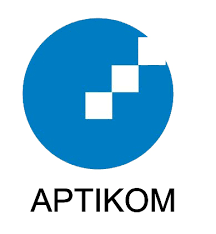Bandwidth Management using Per Connection Queue and Queue Tree: A Case Study on a High School Network
DOI:
https://doi.org/10.18196/eist.v5i1.22376Keywords:
Bandwidth Management, MikroTik Router, Bandwidth Utilization Efficiency, PCQ, Queue TreeAbstract
This research aims to enhance the efficiency of bandwidth utilization at MTs Muhammadiyah Tawangsari using the PCQ and Queue Tree bandwidth management methods on a MikroTik router. Through this approach, an analysis of bandwidth requirements, network topology design, and implementation were conducted. Post-implementation measurement results show a remarkable improvement in average user download speeds: 17.3 Mbps in administration rooms, 10 Mbps in classrooms, and 18.8 Mbps in faculty rooms. These results indicate a significant improvement in tailored bandwidth distribution that meets the specific needs of each network area and ensures that all users receive equal bandwidth usage. This leads to more evenly distributed and efficient network performance.References
F. W. Christanto, A. F. Daru, and A. Kurniawan, “Metode PCQ dan Queue Tree untuk Implementasi Manajemen Bandwidth Berbasis Mikrotik,” Jurnal RESTI (Rekayasa Sistem dan Teknologi Informasi), vol. 5, no. 2, pp. 407–412, Apr. 2021, doi: 10.29207/RESTI.V5I2.3026.
R. Sopandi, . S., H. Priyandaru, A. Taufik, and U. Saputra, “Implementasi Manajemen Bandwidth Pada Smk Darul Mu’in Pakuhaji Dengan Metode Simple Queue Dan Filtering Content,” Technologia : Jurnal Ilmiah, vol. 14, no. 2, pp. 117–123, Apr. 2023, doi: 10.31602/TJI.V14I2.9546.
E. Mufida, D. Aryo Krisnadi, and T. Informatika STMIK Nusa Mandiri Jakarta, “Implementasi Manajemen Bandwidth Menggunakan Metode Queue Tree (Studi Kasus Pada Universitas Pancasila),” Jurnal Teknologi Informatika dan Komputer, vol. 5, no. 1, pp. 19–23, Mar. 2019, doi: 10.37012/JTIK.V5I1.242.
M. S. Anwar, “Analisis QoS (Quality of Service) Manajemen Bandwidth menggunakan Metode Kombinasi Simple Queue dan PCQ (Per Connection Queue) pada Fakultas Teknik Universitas Islam Sumatera Utara,” sudo Jurnal Teknik Informatika, vol. 1, no. 2, pp. 82–97, Jun. 2022, doi: 10.56211/SUDO.V1I2.24.
F. M. Naufal, M. R. Vahlevi, A. Widayana, M. L. Zulfa, and D. Juardi, “Implementasi Keamanan Hotspot Menggunakan Proxy Dan Firewall Dalam Mengatasi Resiko Ancaman Serangan,” Jurnal Ilmiah Rekayasa dan Manajemen Sistem Informasi, vol. 8, no. 2, p. 148, Aug. 2022, doi: 10.24014/RMSI.V8I2.17691.
M. Husnaini, W. Bagye, and M. Ashari, “Implementasi Fitur Layer 7 Protocols Mikrotik Rb750 Di Smkn 1 Narmada,” Jurnal Informatika dan Rekayasa Elektronik, vol. 2, no. 1, p. 78, Apr. 2019, doi: 10.36595/JIRE.V2I1.94.
Y. Mulyanto, M. Julkarnain, and A. J. Afahar, “Implementasi Port Knocking Untuk Keamanan Jaringan Smkn 1 Sumbawa Besar,” JINTEKS, vol. 3, no. 2, 2021.
A. I. Fajrin, S. Sidik, and R. I. Riyana, “Implementasi Manajemen Bandwidth Menggunakan Simple Queue Dan Filtering Content Pada Pusat Pelatihan Kerja Pengembangan Industri jakarta Timur,” Reputasi: Jurnal Rekayasa Perangkat Lunak, vol. 2, no. 1, pp. 26–30, Jun. 2021, doi: 10.31294/REPUTASI.V2I1.134.
P. D. Oktaviansyah, P. Korespondensi, : Paradika, and D. Oktaviansyah, “Penerapan Sistem Pengamanan Port pada Mikrotik Menggunakan Metode Port Knocking,” Journal of Network and Computer Applications (ISSN: 2964-6669), vol. 1, no. 2, pp. 78–90, Jul. 2022, Accessed: May 16, 2024. [Online]. Available: https://jurnal.netplg.com/index.php/jnca/article/view/10
D. Desmira and R. Wiryadinata, “Rancang Bangun Keamanan Port Secure Shell (SSH) Menggunakan Metode Port Knocking,” Jurnal Ilmu Komputer dan Sistem Informasi (JIKOMSI), vol. 5, no. 1, pp. 28–33, Mar. 2022, doi: 10.55338/JIKOMSI.V5I1.242.
B. Ali and M. W. Komala, “Perbandingan Fitur Layer 7 Protocol dan Web Proxy untuk Sistem Keamanan Filtering Rule SMPN 5 Palopo,” Jurnal Literasi Digital, vol. 1, no. 1, pp. 18–23, Mar. 2021, doi: 10.54065/JLD.1.1.2021.3.
M. Ilham, I. Gunawan, and A. Siregar, “Keamanan Jaringan Wlan Dengan Metode Firewall Filtering Menggunakan Mikrotik Pada Smp Negeri 1 Dolok Merawan,” Jurnal ilmiah Sistem Informasi dan Ilmu Komputer, vol. 2, no. 3, pp. 01–16, Nov. 2022, doi: 10.55606/JUISIK.V2I3.309.
D. Desmira and R. Wiryadinata, “Rancang Bangun Keamanan Port Secure Shell (SSH) Menggunakan Metode Port Knocking,” Jurnal Ilmu Komputer dan Sistem Informasi (JIKOMSI), vol. 5, no. 1, pp. 28–33, Mar. 2022, doi: 10.55338/JIKOMSI.V5I1.242.
C. Prihantoro, A. K. Hidayah, and S. Fernandez, “Analisis Manajemen Bandwidth Menggunakan Metode Queue Tree pada Jaringan Internet Universitas Muhammadiyah Bengkulu,” Just TI (Jurnal Sains Terapan Teknologi Informasi), vol. 13, no. 2, p. 81, Jul. 2021, doi: 10.46964/JUSTTI.V13I2.750.
B. Rifai Teknik Informatika, S. Nusa Mandiri Jl Damai No, and W. Jati Barat Jakarta Selatan, “Management Bandwidth Pada Dynamic Queue Menggunakan Metode Per Connection Queuing”.
I. Purnamasari and M. A. Mustofa, “Optimasi Pemanfaatan Local Area Networkdengan 7 Layer Protocol,” 2019.



